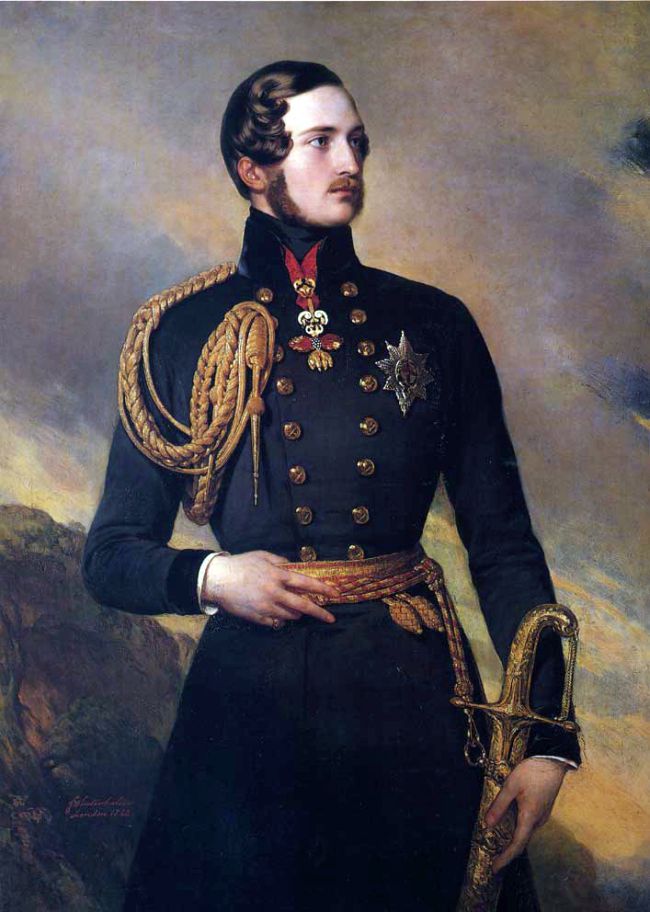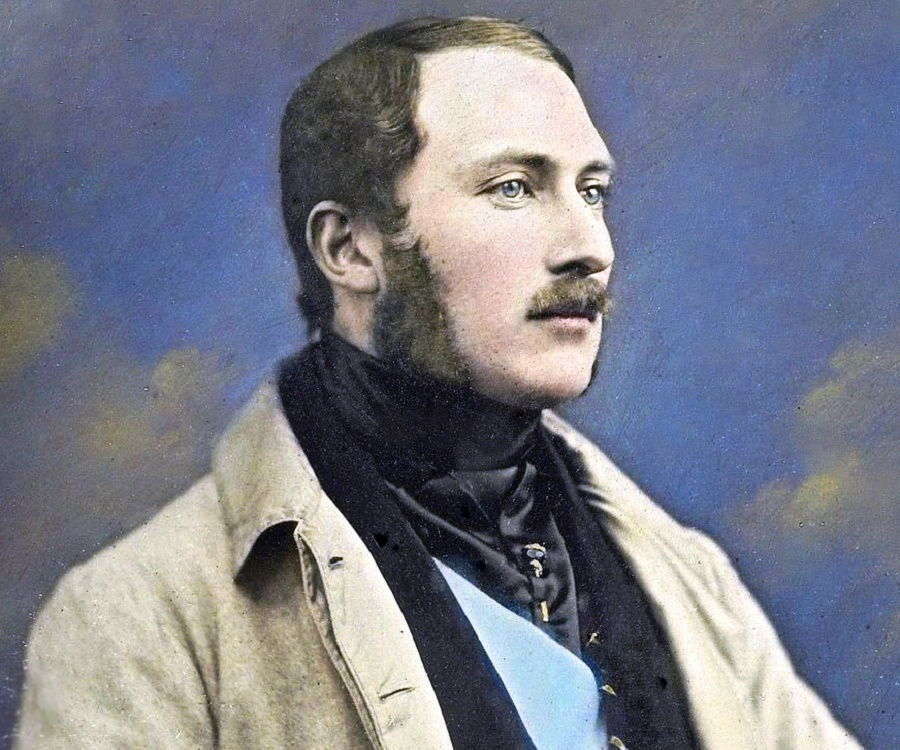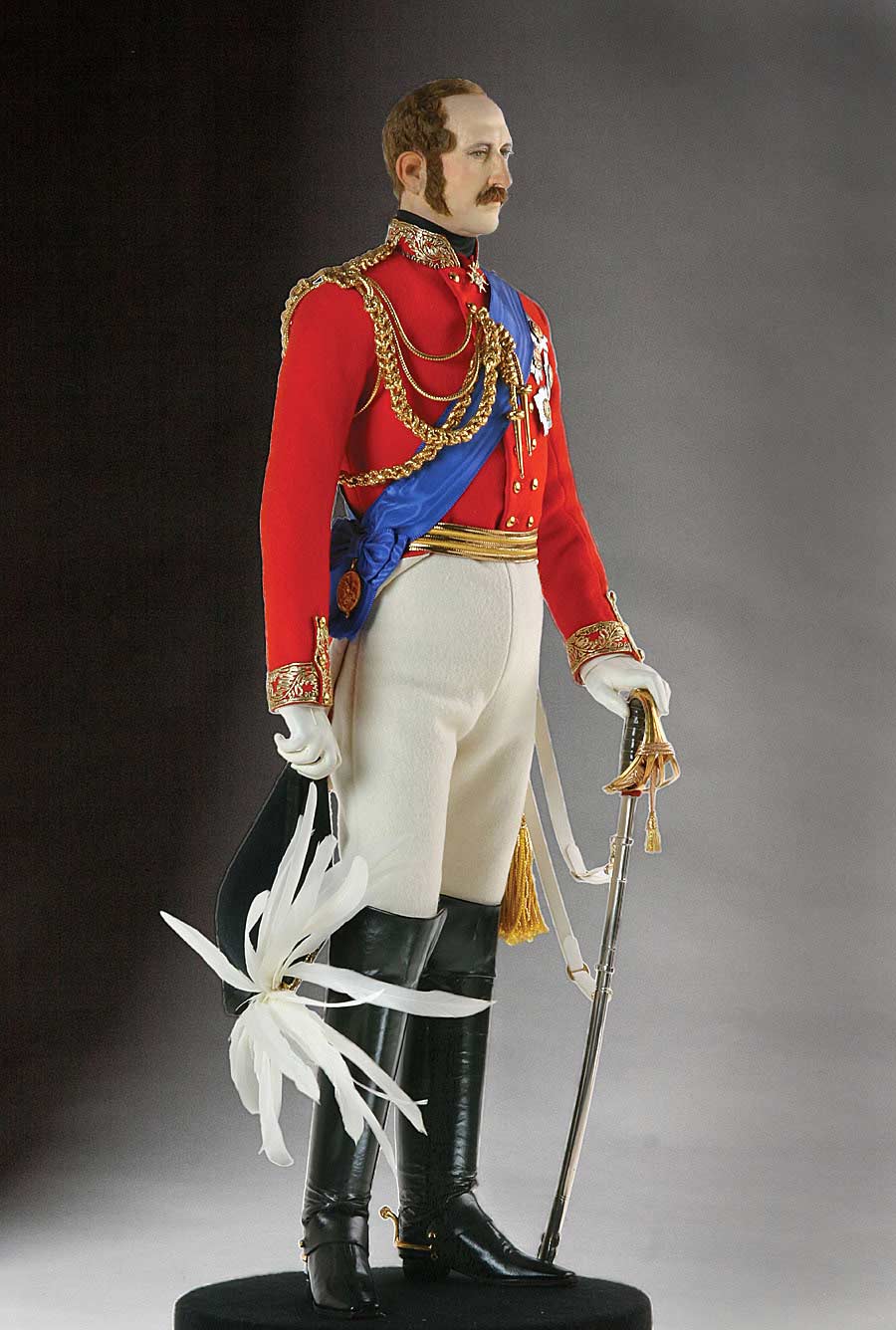
Prince Albert of SaxeCoburgGotha (18191861) Prince Consort of Queen Victoria Government Art
Prince Albert (full name Prince Franz August Karl Albert Emanuel) was born on the 26 August 1819, the younger son of Ernest I, Duke of Saxe-Coburg-Saalfeld (later Saxe-Coburg-Gotha) and Duchess Louise of Saxe-Coburg-Altenburg.

Prince Albert of SaxeCoburg and Gotha
Albert Francis Charles Augustus Emmanuel of Saxe-Coburg-Gotha was born on August 26, 1819, at Schloss Rosenau, in Bavaria. He was the younger son of the duke of Saxe-Coburg-Gotha, who.

NPG Ax9575; Prince Albert of SaxeCoburgGotha Portrait National Portrait Gallery
Finding a Role. Albert was born on 26 August 1819, the second son of Ernest I (1784-1844), Duke of Saxe-Coburg-Saalfeld (Saxe-Coburg and Gotha after 1826) and Princess Louise of Saxe-Gotha-Altenburg (1800-1831). He was baptised Franz Albert August Karl Emanuel, though the anglicised Albert became his preferred name early on.
%2CW C Ross det 1.jpg?itok=lh8XXdcq)
Portrait of Prince Albert of SaxeCoburg and Gotha (18191861), prince consort Artware Fine Art
The wedding of Queen Victoria of the United Kingdom and Prince Albert of Saxe-Coburg and Gotha (later Prince Consort) took place on 10 February 1840 at Chapel Royal, St. James's Palace, in London . Marriage

NPG Ax196501; Prince Albert of SaxeCoburgGotha Portrait National Portrait Gallery
Ernest II (born June 21, 1818, Coburg, Saxe-Coburg-Saalfeld [Germany]—died August 22, 1893, Reinhardsbrunn, Thuringia) duke of Saxe- Coburg - Gotha, brother of Prince Albert (consort of Queen Victoria of England ), and a strong supporter of German unification. Ernest was the eldest son of Duke Ernest I and his first wife, Louise of Saxe-Gotha.

NPG D9328; Prince Albert of SaxeCoburgGotha Portrait National Portrait Gallery
On August 26, 1819, Prince Albert of Saxe-Coburg and Gotha was born near Coburg, Germany. In 1840, when Albert was just 20 years old, he married Queen Victoria, who reigned over the United.

Albert, Prince Consort Biography Facts, Childhood, Family Life & Achievements
Prince Albert and Schloss Rosenau. Schloss Rosenau in Rödental, Bavaria, Germany was located in the historic duchy of Saxe-Coburg. The palace was the birthplace of the House of Wettin's Prince Albert, the beloved husband of Queen Victoria. Rosenau translates as "water meadow". Albert and his older brother Ernst, born in 1818, were close.

NPG x8752; Prince Alfred, Duke of Edinburgh and SaxeCoburg and Gotha Portrait National
Early life Prince Alfred was born on 6 August 1844 at Windsor Castle to the reigning British monarch, Queen Victoria, and her husband, Prince Albert, the second son of Ernest I, Duke of Saxe-Coburg and Gotha. Nicknamed Affie, he was second in the line of succession to the British throne behind his elder brother, the Prince of Wales .

Prince Albert of SaxeCoburg and Gotha
Prince Albert thus is the progenitor of the United Kingdom's current royal family, called the House of Windsor since 1917. [4] In 1826, a cadet branch of the house inherited the Hungarian princely estate of the Koháry family and converted to Roman Catholicism.

Prince Albert facts
Signature. Prince Albert of Saxe-Coburg and Gotha (Francis Albert Augustus Charles Emmanuel; 26 August 1819 - 14 December 1861) was the consort of Queen Victoria from their marriage on 10 February 1840 until his death in 1861. Albert was born in the Saxon duchy of Saxe-Coburg-Saalfeld to a family connected to many of Europe's ruling monarchs.

NPG x197189; Prince Albert of SaxeCoburgGotha Portrait National Portrait Gallery
Prince Albert of Saxe-Coburg and Gotha was the husband of Queen Victoria. As such, he was consort of the British monarch from their marriage on 10 February 1840 until his death in 1861. Introduction Prince Albert of Saxe-Coburg and Gotha

Monarchy’s moderniser Prince Albert of SaxeCoburgGotha HRP Blogs
Albert, Prince Consort (born August 26, 1819, Schloss Rosenau, near Coburg, Saxe-Coburg-Gotha—died December 14, 1861, Windsor, Berkshire, England) the prince consort of Queen Victoria of Great Britain and father of King Edward VII.

Prince Consort Albert of SaxeCoburgGotha Prins albert, Koningin victoria, Portret heren
Early Victorian Portraits Catalogue Entry. Sitter in 208 portraits. Artist associated with 2 portraits. Second son of Ernest, Duke of Saxe-Coburg-Gotha; married his cousin, Queen Victoria, 1840, and played an influential role in public life. Noted as a patron of the arts, Prince Albert was largely responsible for the Great Exhibition of 1851.

NPG x24140; Prince Albert of SaxeCoburgGotha Portrait National Portrait Gallery
The second son of Ernest, Duke of Saxe-Coburg-Gotha, Albert married his cousin, Queen Victoria, in 1840, shortly after her accession to the throne.He came to play an influential role in British public life, was a notable patron of the arts, and an enthusiastic supporter of technological developments and agricultural reform.

Prince Albert Enlightened prince and idol to his wife.
History Ducal standard of Saxe-Coburg and Gotha The Duchy was born when the arbitration of the King of Saxony, Frederick Augustus, produced the Treaty of Hildburghausen on 12 November 1826 for the Gothaische Teilung (Gothan Division), the extensive rearrangement of the Ernestine duchies.

NPG D8140; Prince Albert of SaxeCoburgGotha Portrait National Portrait Gallery
The name Saxe-Coburg-Gotha came into the British Royal Family in 1840 with the marriage of Queen Victoria to Prince Albert, son of Ernst, Duke of Saxe-Coburg & Gotha. Queen Victoria herself was the last monarch of the House of Hanover. The House of Saxe-Coburg-Gotha as a British dynasty was short-lived.